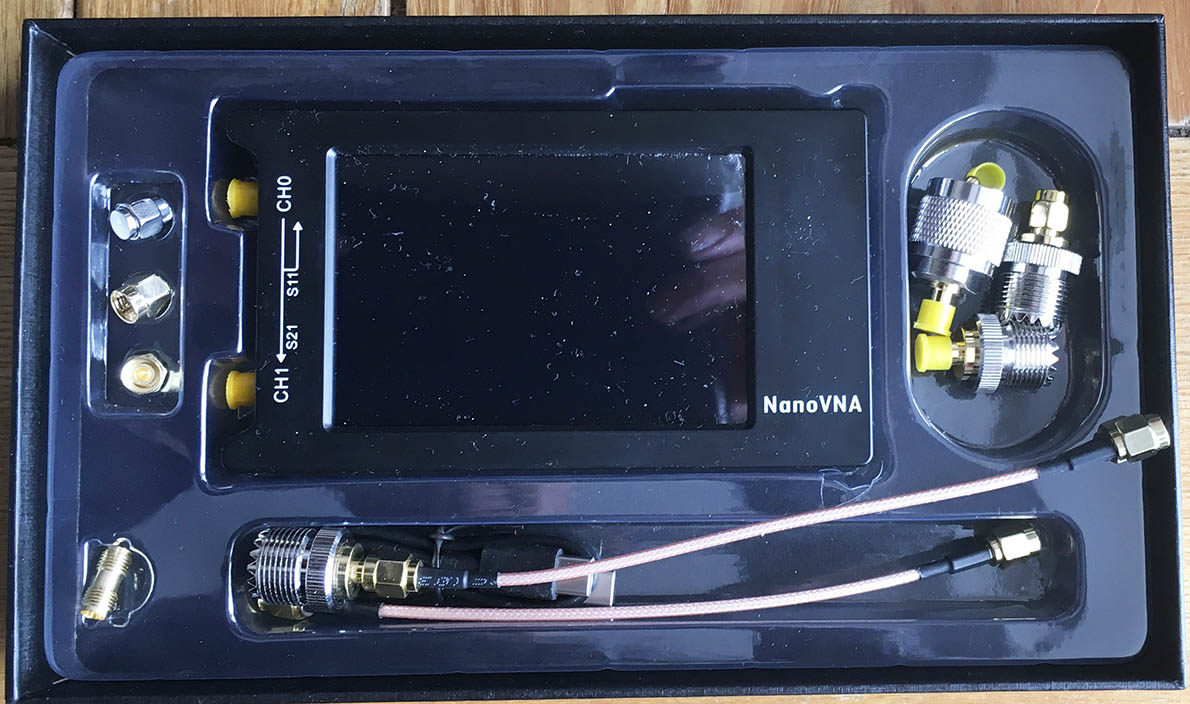
 Another small efficient matching transformer for an EFHW – 2643251002 – #5 – improved Simsmith model (v1.03). Garden environmental telemetry project – part 5. Review of inexpensive Chinese thermostat – DST1000.
Another small efficient matching transformer for an EFHW – 2643251002 – #5 – improved Simsmith model (v1.03). Garden environmental telemetry project – part 5. Review of inexpensive Chinese thermostat – DST1000.  Comparing RF Power Amplifier Tube Performance Computer and Calculate initial load line of valve RF amplifier on the AL811H. (tr)uSDX unauthorised product and countermeasures.
Comparing RF Power Amplifier Tube Performance Computer and Calculate initial load line of valve RF amplifier on the AL811H. (tr)uSDX unauthorised product and countermeasures.  tinyPFA – a set of Allan Deviation plots. tinyPFA – Trimble Thunderbolt GPSDO vs Leo Bodnar Precision GPSDO. tinyPFA – HP8656B vs Trimble Thunderbolt GPSDO. BG7TBL FA-3-6G frequency meter – initial impressions. nanoVNA-H – can firmware be updated if it has a broken USB socket?. Refurbishing aluminium antenna parts affected by weather / corrosion. Can a diode be used to rectify signals smaller than its ‘threshold’ voltage?. Pulse test of a Hantek 6204BD 4 channel 200MHz USB DSO and supplied probe. Re-engine of Deutscher 650 chipper shredder. Reading shows resonant fx of tuned circuit or crystalĪ lovely old, very old, set of drawers for the NanoVNA H4 and its various bits and pieces. TO CHECK RESONANCE OF TUNED CIRCUITS, COMMON MODE CHOKES AND QUARTZ XTAL fx – Ports Ch0 and CH1 I’ll soon be adding another video dealing with checking quartz crystals. The notes below take you through the setup procedure for checking SWR and aerial resonance and tuned circuits and quartz crystal frequencies. The box was rather small so it was a bit of a squeeze. Below is the coax wound on the ferrite ring. I’ve checked the results on my NanoVNA… see video above.
tinyPFA – a set of Allan Deviation plots. tinyPFA – Trimble Thunderbolt GPSDO vs Leo Bodnar Precision GPSDO. tinyPFA – HP8656B vs Trimble Thunderbolt GPSDO. BG7TBL FA-3-6G frequency meter – initial impressions. nanoVNA-H – can firmware be updated if it has a broken USB socket?. Refurbishing aluminium antenna parts affected by weather / corrosion. Can a diode be used to rectify signals smaller than its ‘threshold’ voltage?. Pulse test of a Hantek 6204BD 4 channel 200MHz USB DSO and supplied probe. Re-engine of Deutscher 650 chipper shredder. Reading shows resonant fx of tuned circuit or crystalĪ lovely old, very old, set of drawers for the NanoVNA H4 and its various bits and pieces. TO CHECK RESONANCE OF TUNED CIRCUITS, COMMON MODE CHOKES AND QUARTZ XTAL fx – Ports Ch0 and CH1 I’ll soon be adding another video dealing with checking quartz crystals. The notes below take you through the setup procedure for checking SWR and aerial resonance and tuned circuits and quartz crystal frequencies. The box was rather small so it was a bit of a squeeze. Below is the coax wound on the ferrite ring. I’ve checked the results on my NanoVNA… see video above. 
I’ve wound 8 turns of RG8X Mini8 coax on the ring to form a common mode choke to cover the HF spectrum. The fourth video explains how to set up and use both ports on the VNA for measurement. The third video shows test results from a common mode choke. The second video deals with tuned circuits. The first video concerns SWR and antenna resonance. Too many people are frighten off by in-depth theory and mathematics when all that is needed to get started is a simplified explanation. I say non-technical because I wanted to explain the basic operation of the unit to newcomers to the hobby. Patch leads connect the female SMA ports to the VNA.īelow are a few non-technical videos of my NanoVNA H4 in action. If I were to check VHF, UHF and higher, the lead length would come into play and give me false readings. At the frequencies I’m interested in, medium wave to 30MHz, the length of the crock clip leads won’t affect the test results. Pictured below is a small box I made up for connecting to both VNA ports.








 0 kommentar(er)
0 kommentar(er)
